Text by Mary L. Peachin with photos by Pedro C. Fernandez and Dave Jaskey
Vol. 24 No. 2, November/December, 2020
“More than two hundred divers have died here.” Our flashlights scanned a sign of a skull and cross bone emblazoned with the word “peligro” or danger. The chill of the 78˚ water and the message gave me the shivers. I knew that our lives were in the hands of Pedro C. Fernandez, an experienced certified cave diver. We would not stray from his lead.
But, that was easier said than done. Where the crystal freshwater of Chac-Mool, one of Yucatan’s 3000 underwater caves blended with saltwater seeping into its interior, I first thought my vision had blurred. The halocline mixture of fresh and salt water reduced visibility to only a few feet. I kicked faster to keep up with Pedro. I could barely see his light.
Campeche, Yucatan and Quintana Roo comprise the Yucatan Peninsula. A low, flat landscape located between the Gulf of Mexico and the Caribbean Sea, the Mexican state lacks rivers or streams. Its scarcity of surface water dates back 3,000 years when the Mayans explored the cenotes as a primary water source. The cenotes were used for more than just drinking water: they provided “virgin” water for religious rites, and burial and sacrificial sites. Mayan pottery shards, charcoal, torches, and petroglyphs can be found in most of the explored caves. The cenotes were sometimes used as a place of refuge as well as a source for clay and minerals.
A dzonot, the Mayan word for “cavity of water” is formed when rainwater seeps through cavities in Yucatan’s porous limestone. It is estimated that only 1400 of the cenotes have been explored. The water might be turquoise or green, an irregularly shaped cave. Some open into surface pools or remain hidden below underground caverns or deep fissures in the jungle. In Dos Ojos, curtains of surface light beamed into the cavern illuminating thousand of delicate stalactites and stalagmite formations. It is spectacularly beautiful and scary.
Three of us had signed on for a day of diving in the cenotes with Scuba Cancun. Picking us up at our hotel, they drove us about 45 minutes south into the remote jungle. Our bumpy ride along a narrow road was soon interrupted by the dust of tourists on an ATV tour. They, too, had come to look at the entrance of Dos Ojos, one of the cenotes that surfaced into a pool. Dos Ojos got its name because there are two adjacent cenotes.
After donning our wet suits in the steamy jungle next to the van, we wandered down a dirt path that led to uneven stone steps leading down to the pool. Pedro Fernandez, our divemaster, gave us a serious briefing including cave hand signals, some performed with flashlights in the darkness. If we were to get separated, there were arrows pointing to the exit of the cave. Throughout the day, I never saw one of those arrows. Each of our two dives would last an hour, and while not deep—perhaps a maximum of 40 to 68 feet—the sticky warmth of the humid jungle lasted briefly.
We followed Pedro occasionally sighting black mollies, catfish, and three inch freshwater shrimp. Mostly, we marveled at the formations of stalactites and stalagmites. A total of forty species have been identified including 38 crustaceans and two fish in the cenotes.
Dos Ojos has a platform with a ladder for jumping in and climbing out. By the time we reached the van, we quickly ungeared and chew into our sandwiches. Then, off we went on a thirty minute ride to Chac-Mool or “little brother.”
Again we plunged into the cold water following Pedro past that sign of danger. In Chac-Mool, there is a large dome where you can surface to see roots clinging from the surface of the earth above. Bats cling to the ceiling. After a brief look around, we submerged to encounter a halocline, the mixing of seawater with the fresh—reducing visibility to a few feet. My fins flapped into high gear as I followed the weak beam of Pedro’s light.
And then it was over. To be underwater water in such a surreal environment was an incredible experience, one that will last a lifetime.
If you go:
Scuba Cancun, www.scubacancun.com.mx


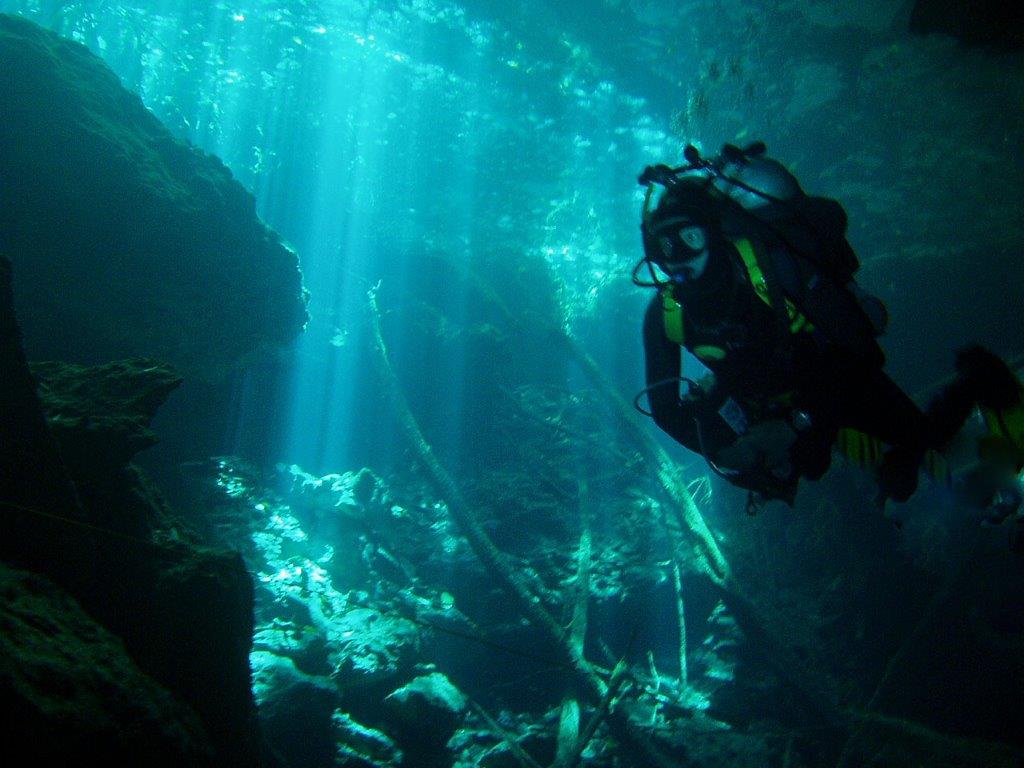
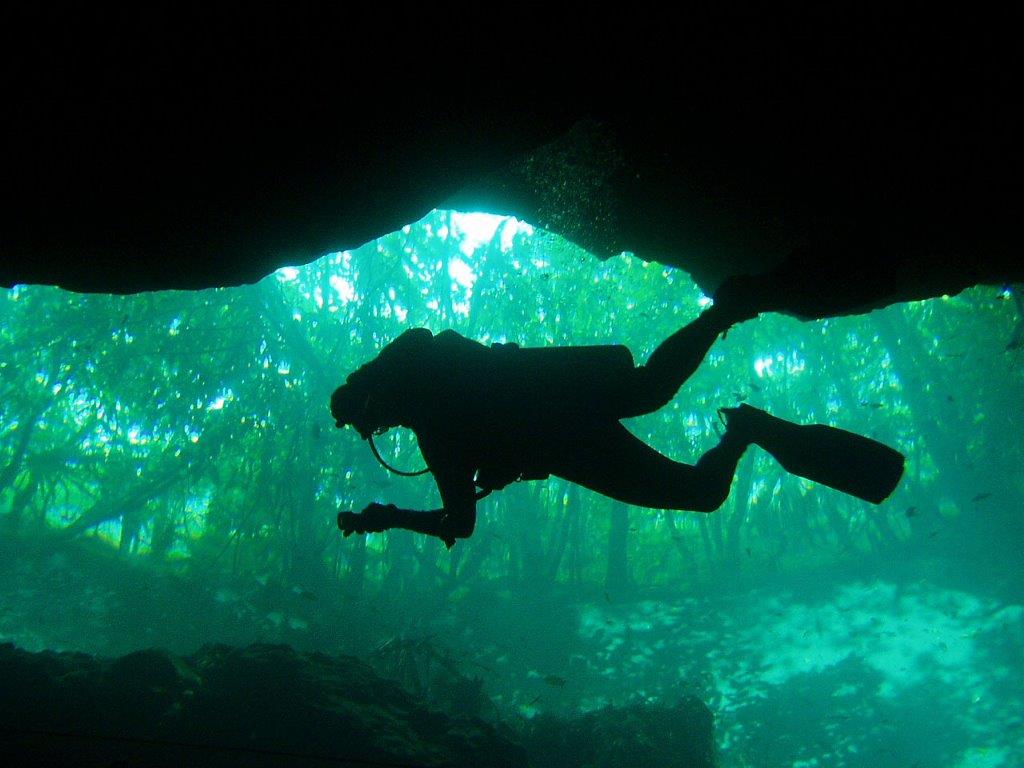
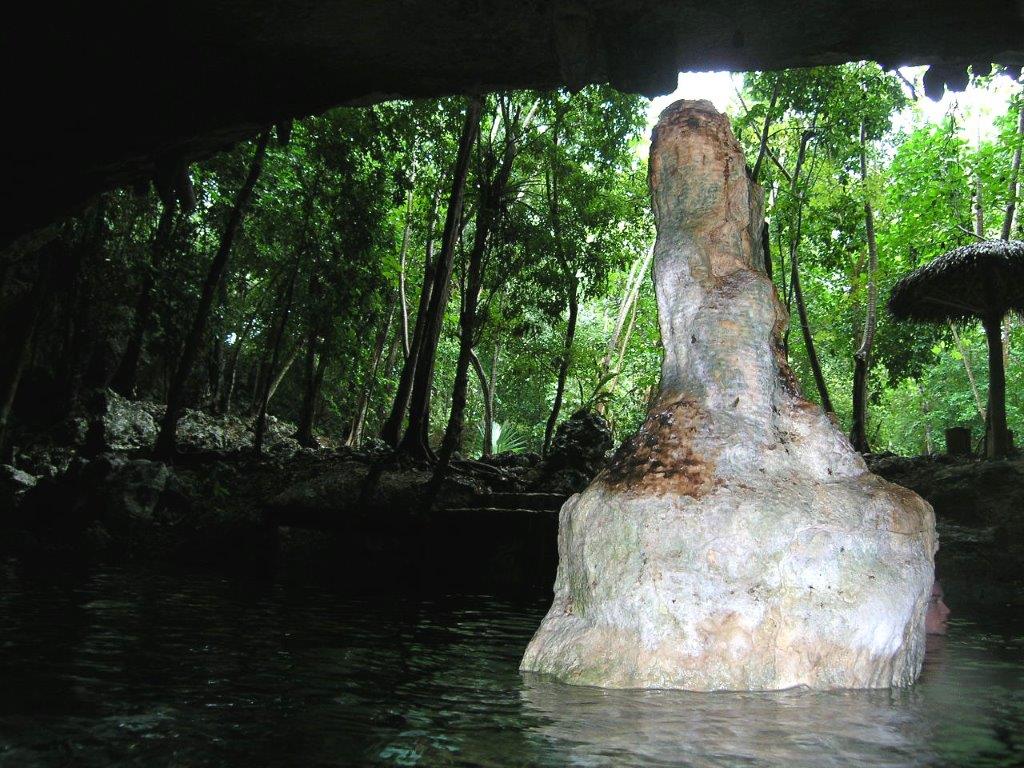
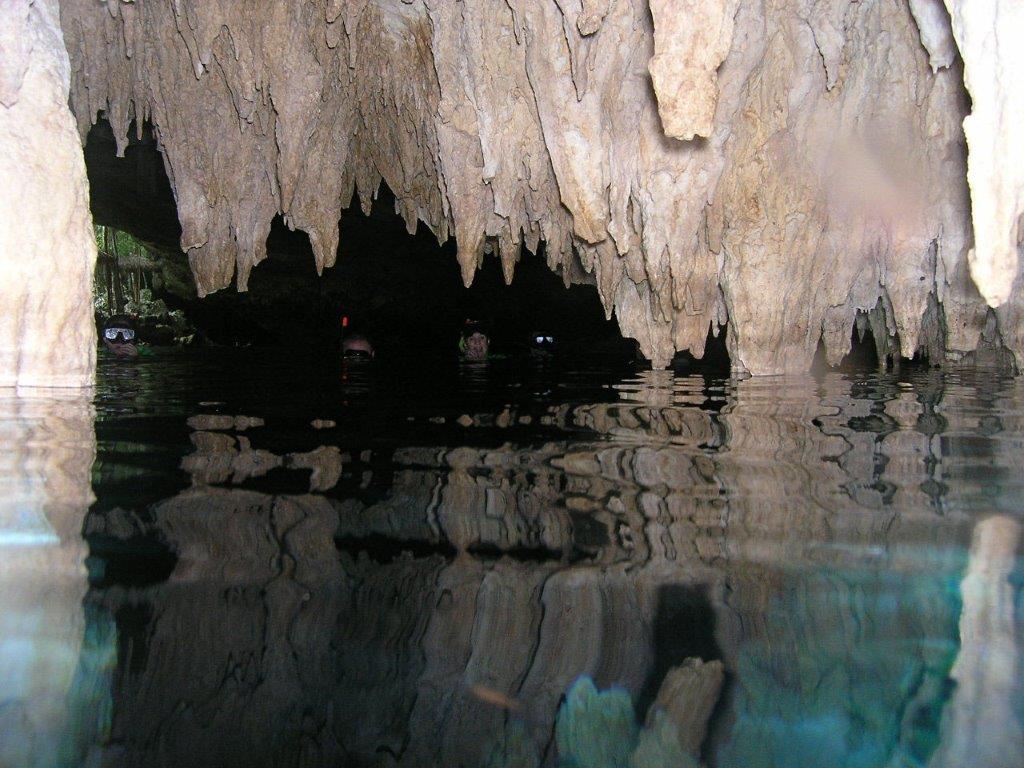
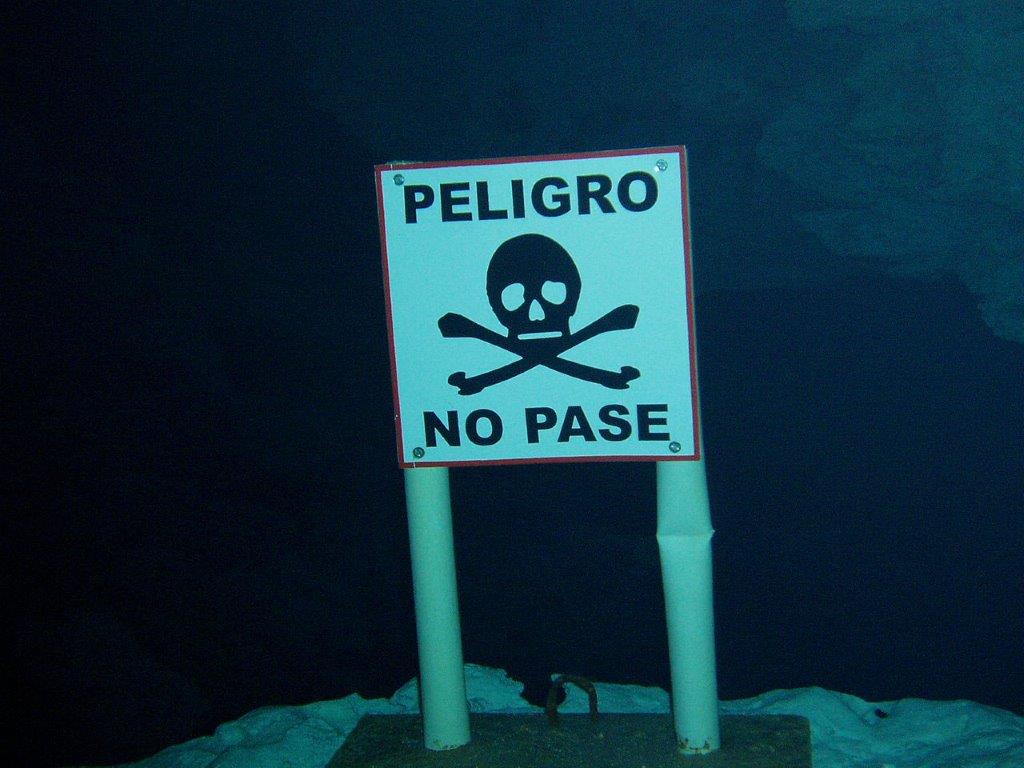
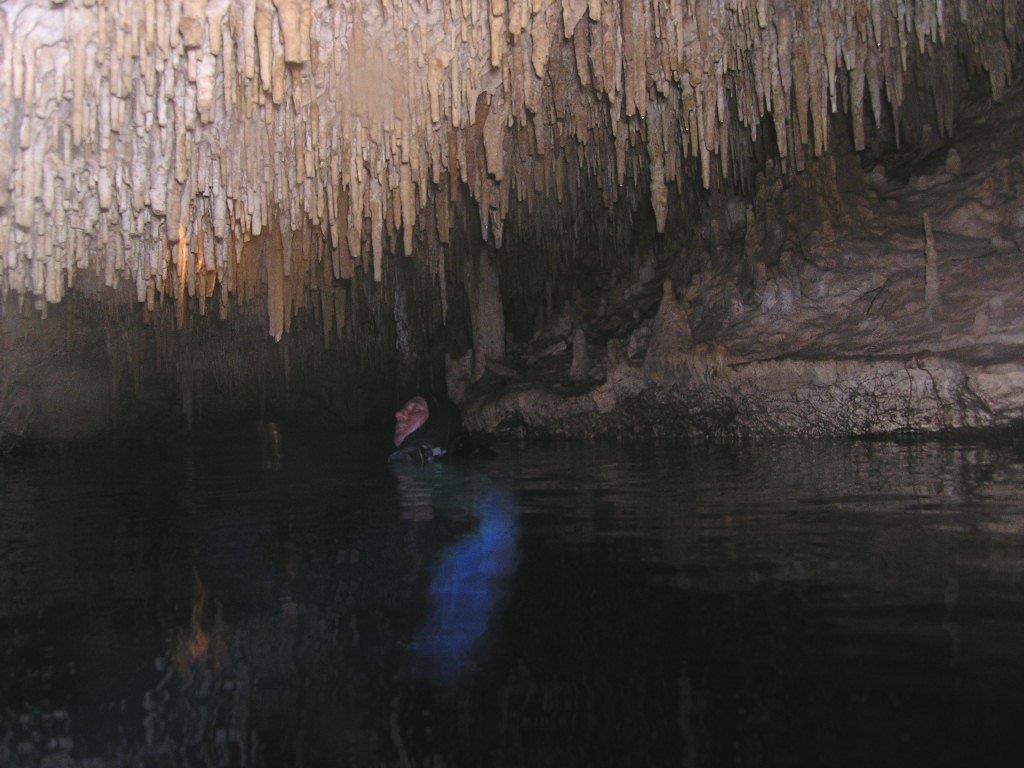
You are quite the adventurer